I found this giant fungus, 20cm diameter, on the Murrough/Broadlough on August 28th in muggy weather. It had lovely patterning. Is it a rare fungus?
Colum Clarke, Co Wicklow
The mycologist Hubert Fuller tells me that it is the Parasol Mushroom – Macrolepiota procera. It is a large stately mushroom, with a distinct snakeskin pattern on the stem – not visible in the image. At the top of the stem is a complex double ring. The cap has concentric brown, recurved scales. Not rare – fairly common, it occurs in grassy places and roadside verges.
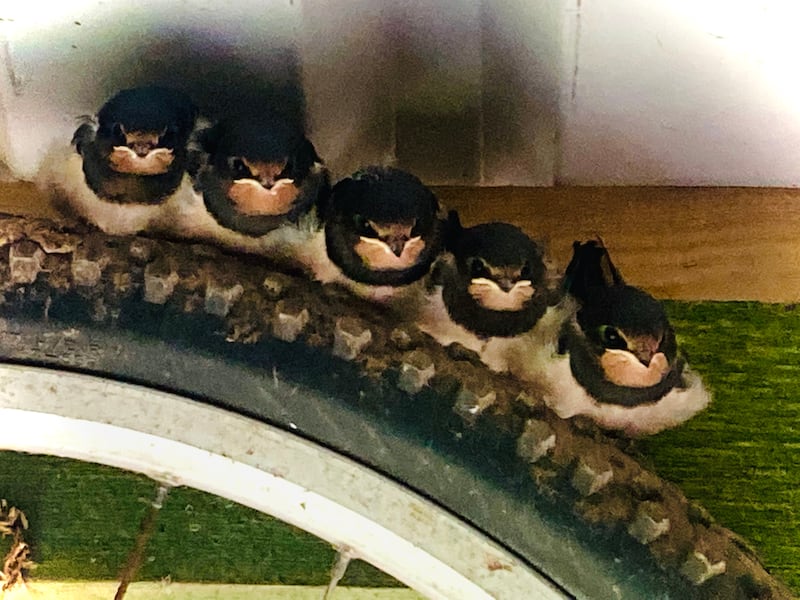
I observed these five fledgling swallows on a bicycle wheel in the garage. They had left the nest and went on to take their first forays outside with their parents and roost on the washing line. They were attacked by a sparrow hawk who must have taken one and scattered the rest. But, I did see a parent feeding two of them in the garage the following evening. I monitored the garage all evening and sure enough the sparrow hawk passed by again at about the same time as the previous night’s attack. The next day they were gone and hopefully may survive long enough to migrate.
Philip Masterson, Co Cork
Sparrowhawks have to live too. Swallows have two broods a year – sometimes three – with four or five eggs per brood. If just two nestlings survive overall each year, swallow numbers will remain stable.
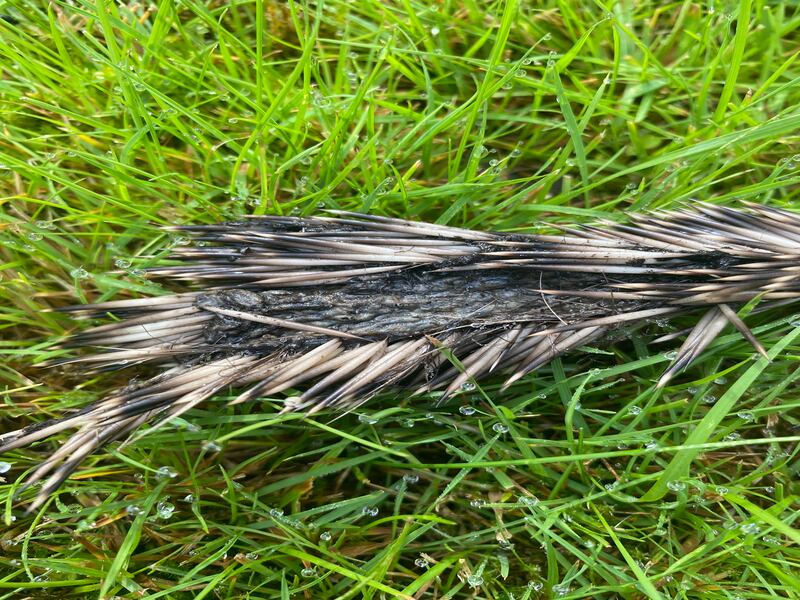
What on earth happened here? There were and maybe still are hedgehogs in our regular sized back garden. As Síle the cat sleeps indoors at night and only tours the neighbourhood during the day, it’s unlikely she had anything to do with it. There was no sign of carnage, no blood and guts, no bones, nothing but this long (about 20cm) strip of quills obviously from a hedgehog.
Deirdre Gaffney, Dublin
It certainly gives a new meaning to tearing a strip off someone. Lack of blood and guts would indicate that the dastardly deed did not take place in the garden. Possibly the hedgehog was killed by a car and a scavenging crow dropped the bit of skin flying over your garden after having feasted.
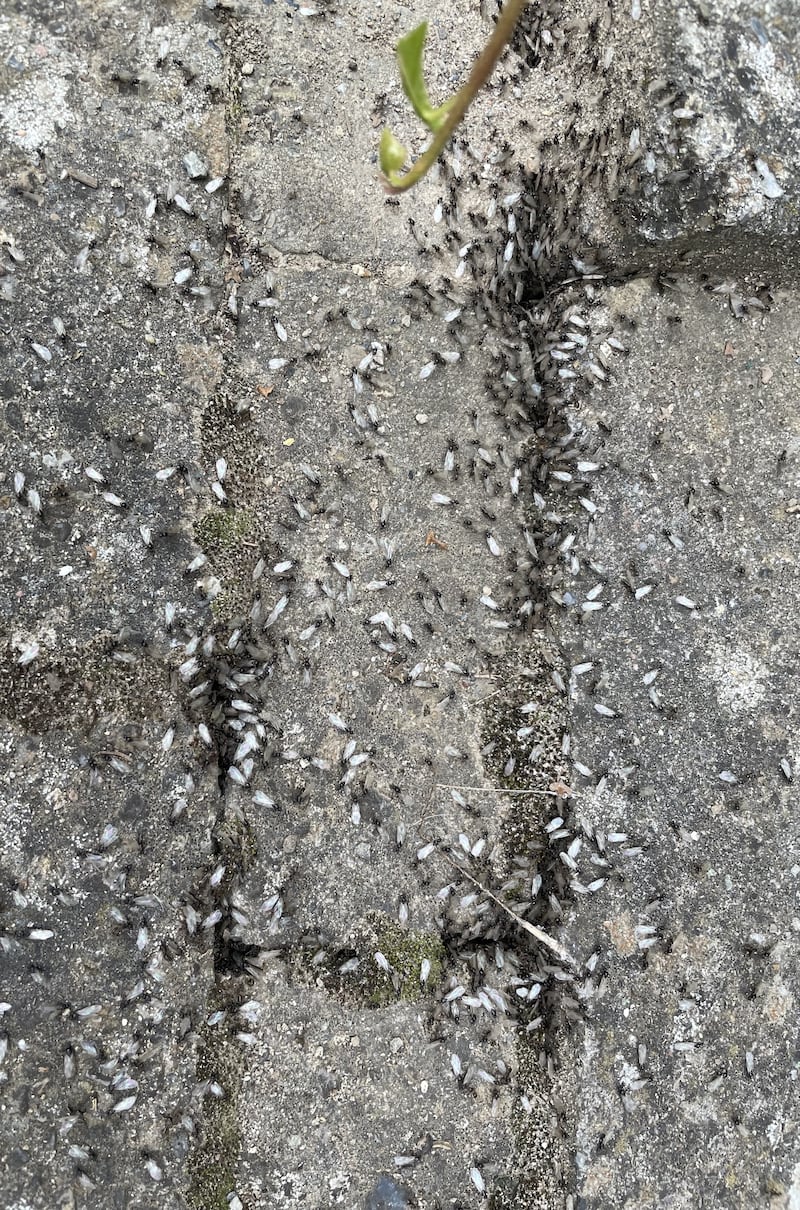
Can you explain what is happening with this ant colony?
Kieron O’Neill, Dublin
They are in full mating mode. Queens – there are very many per nest – develop wings and fly in the air where they are mated by winged males. They then fall back to earth, break off their wings, go underground to hibernate and will form next year’s ant colonies when they re-emerge. The males just die off. The whole event is controlled by weather conditions and queens and males from many nests in the area take part in the aerial orgy.
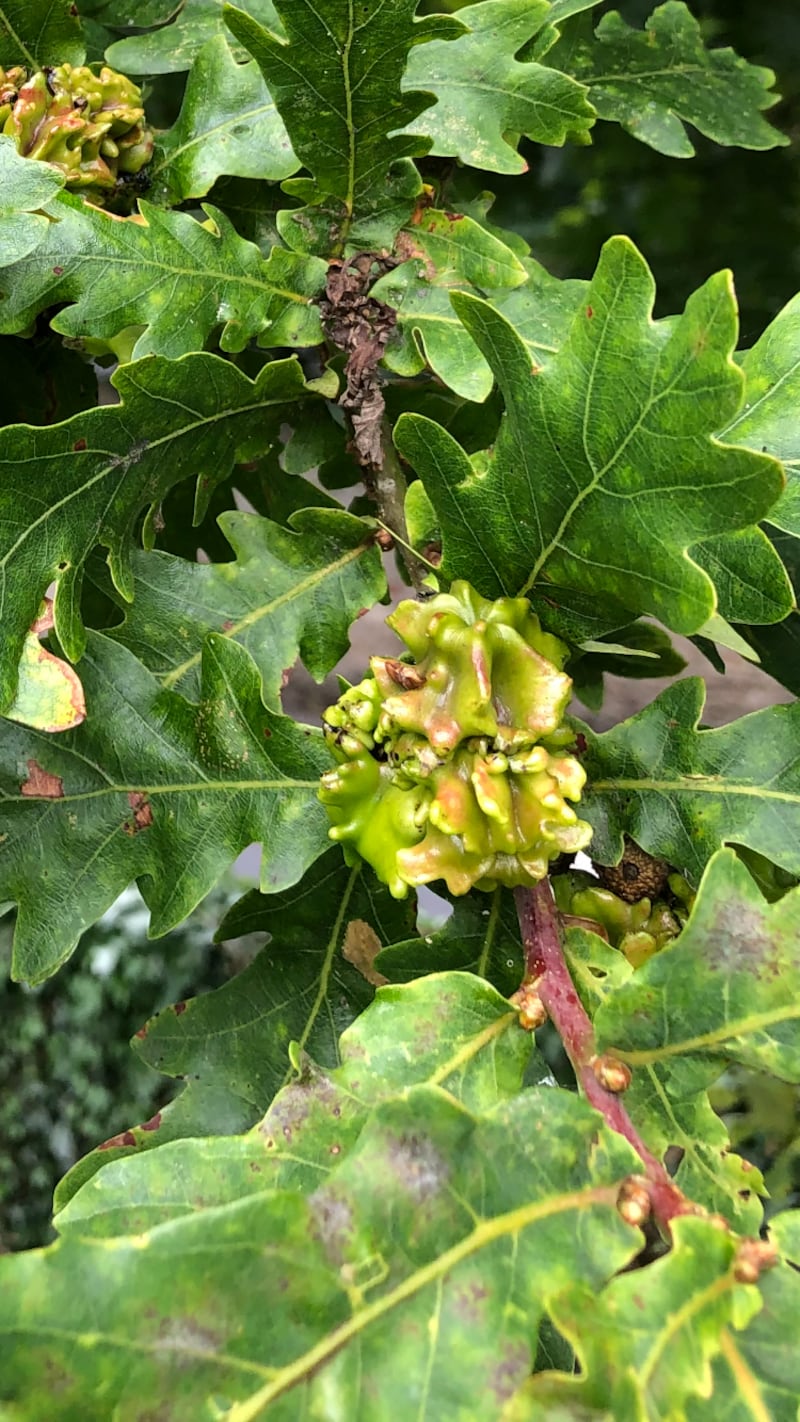
I found this and similar growths on some oak trees growing locally. I’ve heard they are produced by an oak gall wasp but I’m wondering how they differ from the formation of oak apples. Are they caused by different gall wasps?
Jenny Donohoe, Dublin
Galls are formed on oak by tiny Cynipid wasps. Andricus kollari lays eggs in the buds, whose growth is then completely changed, and the oak apples are formed with the feeding larva inside. A quercuscalis lays in the developing acorn and this knopper gall is formed and the acorn will not now germinate.
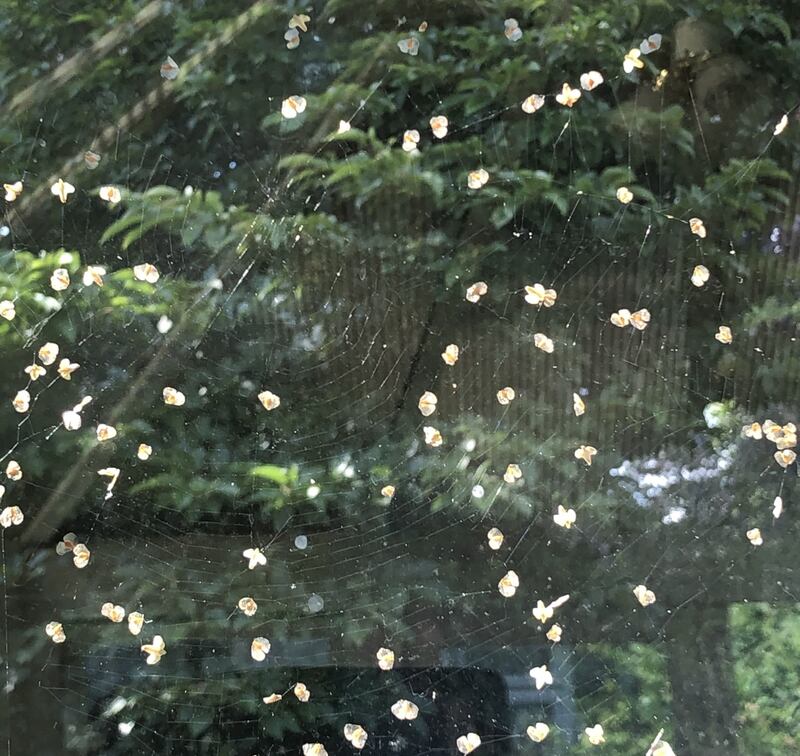
In recent days swarms of this insect have been flying in our garden, many of them caught on various spiders’ webs. What are they?
Jack Morrissey Dublin
They are not insects at all but birch seeds. Birch produces thousands of tiny seeds that are dispersed by the wind at this time of year.
Please submit your nature query, observation, or photo with a location, via irishtimes.com/eyeonnature




